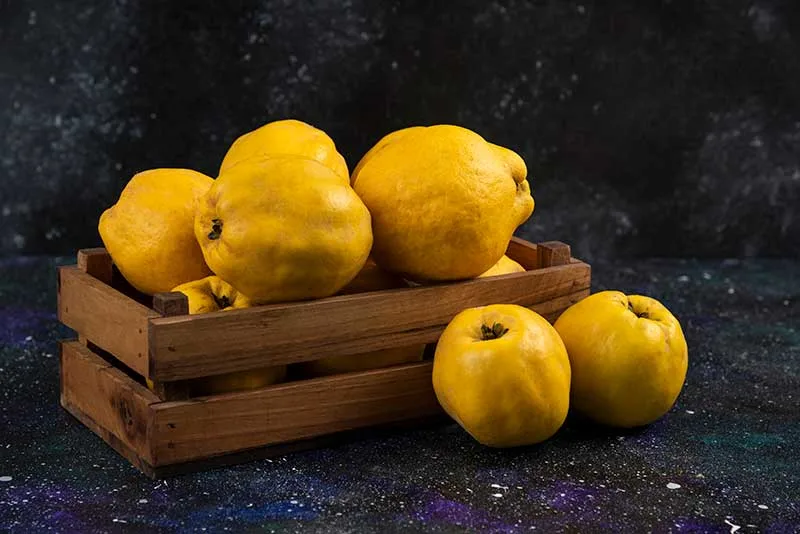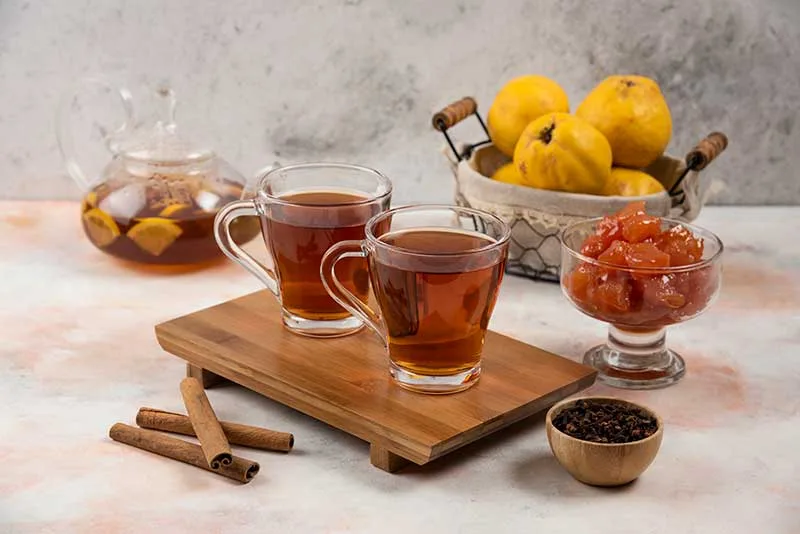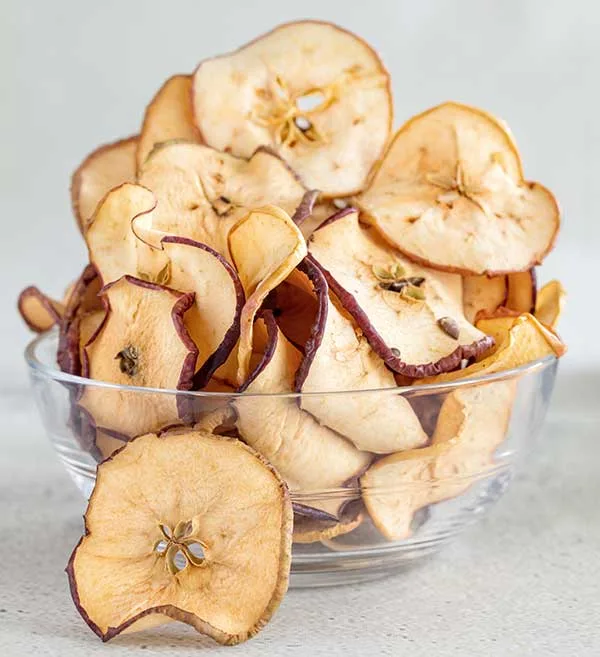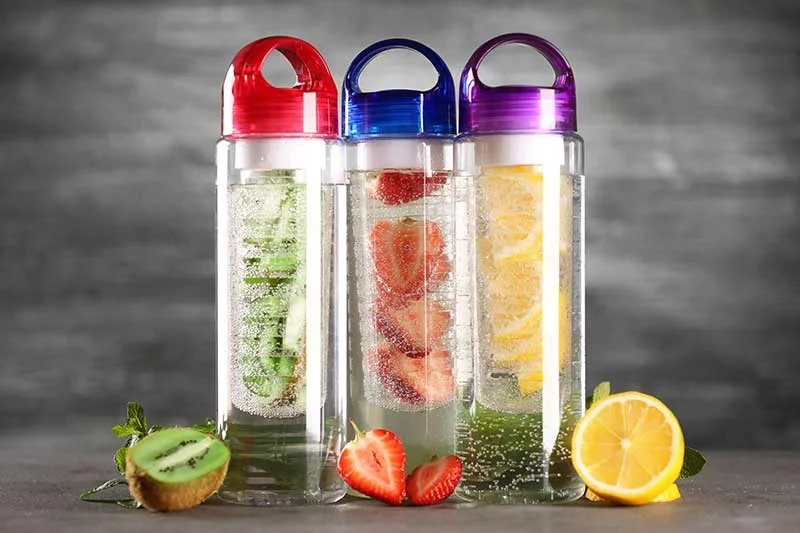Quince Tea: Origin, Health Benefits & Best Brewing Recipes
Sometimes a simple thing can make a person feel better. Quince tea is one of those things for me. Quince fruit is not strange, and brewing a tea with it isn’t difficult. But since quince isn’t a common fruit, we usually forget about it. It’s fragrant and, especially on cold days, it soothes the body like a warm hug. Many people know the quince as grandma’s jam, but behind this sweet taste and beautiful yellow color, there are many hidden properties. A healthy, caffeine-free drink that is a different choice for our busy days. Call it a detox herbal tea or a tea to pack your infuser with, it’s a great choice, especially during autumn.
In this article, I want to tell you in simple words what quince tea is, where it comes from, what its benefits are, how it is made, and what you can add to it if you want to make it a little more fragrant and aromatic. I’m sure you’ll want to try it after reading this post.
Origin of Quince
Quince tea is made from the fruit of the quince tree, called Cydonia oblonga. It is native to West Asia, the Caucasus, Iran, and the Mediterranean region. Quince has been used as a medicine and food throughout history in various cultures.

In traditional Greek and Roman medicine, quince was considered a symbol of fertility and was recommended for strengthening the stomach and curing coughs. In the Middle East and Central Asia, the dried quince was used to brew teas and make medicinal blends for centuries. Interestingly, in South Korea, there is a sweetened version of Quince tea called Mogwa-cha, which is consumed to treat coughs and sore throats in winter. Today, quince tea, with its mild flavor and scientifically proven properties, is entering global health-oriented diets.
How to Brew Quince Tea?
Brewing a cup of delicious quince tea is simple and easy. You can use fresh, dried, or even sweetened quince syrup to make quince tea. However, in the traditional, homemade method, dried quince and mild spices such as cinnamon are usually used.

Ingredients You Need
- 1 to 2 tablespoons dried quince (or a few freshly roasted or dried quince slices)
- 2 cups boiling water
- A stick of cinnamon or a few cardamom seeds (optional)
- Honey or candy (to sweeten or to eat when drinking your tea)

Best Brewing Recipe
- Pour the dried quince and spices into a teapot
- Pour boiling water over them and cover with the lid
- Let it steep for about 15 to 20 minutes
- Sweeten with honey or drink it with a piece of candy if you like
You can also add some fresh basil to make the taste even more interesting. However, in this case, it is better to chop it first and fry it in a pan without oil to release more of its aroma.
You can also prepare a cup of cold brew quince tea. Add the same amount of dried or freshly cut quince to a herbal tea bottle. Then fill the bottle with cold water and leave it in the fridge for 2 to 4 hours. It’s yet another healthy, herbal cold drink for summer.

What Can I Add to Make It More Delicious?
Quince tea has a mild, slightly sweet taste on its own, but you can design your flavor by adding different organic additives. Here’s a list of what you can add to your cup of quince tea to make the taste even more interesting:
- Cardamom
- Ginger
- Caraway
- Orange peel
- Borscht
To sweeten your tea, honey is always a healthy option compared to white sugar. If you prefer a more tart drink, a little fresh lemon juice or even lemon zest will do the work for you. Combining one or two of these ingredients, depending on your taste and the season, can turn your cup of quince tea into a special and personalized drink.
Health Benefits of Quince Tea
Quince tea has many health benefits, as it has been used as a medicinal herbal tea in the old days. Even today, grandmas still refer to quince tea as the best remedy to common cold. There’s experiece behind it backed by science. To this end, let’s explore the health benefits of this delicious tea.
Rich in Natural Antioxidants
Quince tea contains flavonoids such as quercetin and polyphenols, which play an important role in protecting the body’s cells from the damage caused by free radicals. These compounds are called antioxidants, and they slow down the aging process and contribute to overall health and well-being.
Reduces Inflammation in the Body
Studies have shown that compounds in quince fruit help reduce chronic inflammation in the body by lowering inflammatory substances such as TNF-α and IL-6. This is of great importance for anyone suffering from arthritis, digestive problems, and autoimmune diseases.
Improves Reflux and Digestive Problems
Quince tea is a soothing choice of herbal tea if you experience gastroesophageal reflux disease (GERD) or heartburn. In a study on children with reflux, quince extract has a positive effect on reducing digestive symptoms.
Supports Heart Health and Lowers Cholesterol
When you drink quince tea or even eat the fruit, its compounds reduce bad cholesterol (LDL) and increase good cholesterol (HDL). In fact, a study shows that quince leaf extract has a similar effect to the drug simvastatin and prevents plaque formation in the arteries.
Strengthens the Immune System
The presence of vitamin C and other immune-boosting compounds makes quince tea a suitable drink for cold seasons. Compounds in quince fruit or tea help with the production of white blood cells and make the body more resistant to viruses and bacteria.
Reduces Nausea, Especially During Pregnancy
A clinical study on pregnant women found that quince syrup or extract is more effective than vitamin B6 supplements in reducing morning sickness. Therefore, quince tea can be an organic, safe herbal tea choice for stomach relief in early pregnancy.
Natural Calming and Anti-Stress
Although scientific research in this area is still limited, those drinking quince tea regularly say that the mild aroma and flavor of quince tea creates a sense of calm and reduces mental stress, especially when you add herbs like borage or cinnamon.
Conclusion
Quince tea is as simple as it is useful. It doesn’t require any special equipment or fancy ingredients. All you need is a teapot, some tea, and a little time. Like many people, when you first try this tea, you may wonder why you didn’t try it sooner. This caffeine-free drink is a great choice for evenings, for a break, or even in the middle of a busy day. You can customize its flavor, enhance its properties, and most importantly, enjoy the moment you drink it. If you’re looking for something natural, delicious, and relaxing, try quince tea. It might just become one of those things that always stay on your kitchen shelf.
